“Life and death matters, yes. And the question of how to behave in this world, how to go in the face of everything. Time is short and the water is rising.” -Raymond Carver
As we make our way through October, Halloween approaches here at Starts With A Bang! But as eerie as the world and our Universe might be, our goal is always to shed a little light into how we know the things we do, and what the possibilities beyond our knowledge might be. Take a look back on this past week in case you missed anything:
- Why don't we shoot Earth's garbage into the Sun? (for Ask Ethan),
- Astronomy's dark horse lit up by Hubble (for Mostly Mute Monday),
- Shocker! Nobel prize in physics goes to topology in materials, not gravitational waves,
- The science of how a hurricane works,
- Scientists catch the highest energy particles by making them go faster than light, and
- Are the beginning and end of the Universe connected?
There's never a shortage of things to wonder about, but simultaneously, we should never forget what we already know (and how we know it), which is substantial and important! Now, with the introductions out of the way, let's jump right into our comments of the week!
Past and future light-cones in special relativistic (Minkowski) space. Image credit: Wikimedia Commons users K. Aainsqatsi and Stib, under a c.c.a.-s.a.-3.0 license.
From ziggurism on causality and warp drive: "Do not these faster than light warp drive flights allow you to violate causality?"
Only if you restrict your definition of cause and effect to something that happens inside of a light cone. Yes, if something moves faster than light, then things that were outside your past light cone can affect your present, and things in your present can affect things outside your future light cone. Under normal relativistic rules, this would violate what we think is possible, but causality is something else: an occurrence from the future affecting an event in the past. And traveling faster than light won't make that happen.
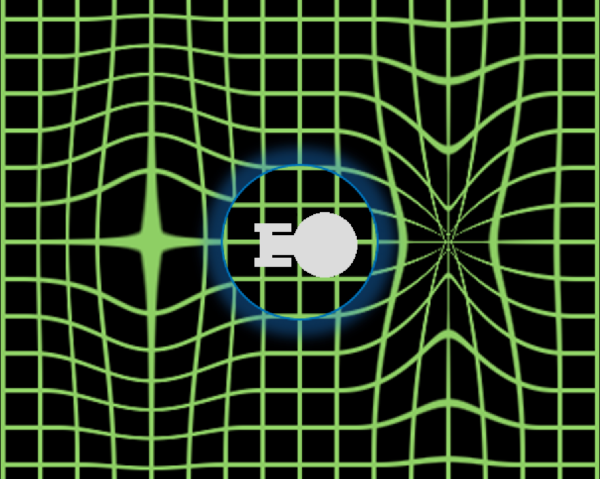 A warp field from Star Trek, which shortens the space in front of it while lengthening the space behind it. Image credit: Trekky0623 of English Wikipedia.
A warp field from Star Trek, which shortens the space in front of it while lengthening the space behind it. Image credit: Trekky0623 of English Wikipedia.
From Naked Bunny with a Whip on warp drives and gravitational waves: "My problem is that I think of gravity waves as an expansion and contraction of empty space, too, and I can’t make the connection between a large-scale phenomenon like the expanding universe with a local event like turning on an Alcubierre drive."
There are two things that are going on with gravitational waves that it's important not to get mixed up: what a gravitational wave does to space as it passes through it and what causes the creation of a gravitational wave. For the first one, gravitational waves cause an oscillatory expansion-and-contraction in a simultaneous, in-phase fashion for mutually perpendicular directions.
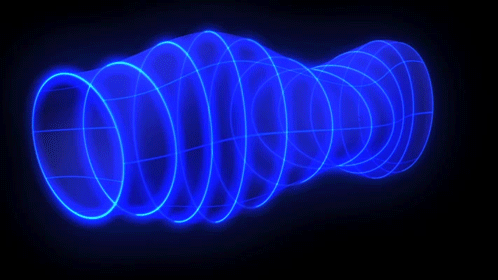 An exaggeration of how gravitational waves distort the space they pass through. Image credit: ESA, via http://www.esa.int/Our_Activities/Space_Science/ESA_congratulations_on_….
An exaggeration of how gravitational waves distort the space they pass through. Image credit: ESA, via http://www.esa.int/Our_Activities/Space_Science/ESA_congratulations_on_….
But what causes gravitational waves to be emitted or created in the first place? A massive particle moving through curved space, for one. Two massive particles in motion relative to one another, for another example. Or anything that caused a transformation in the curvature of space in a given location. Going from a "flat space" to an "Alcubierre space" would definitely generate gravitational waves, as would switching back. In other words, gravitational waves could be considered the ultimate "warp signature"!
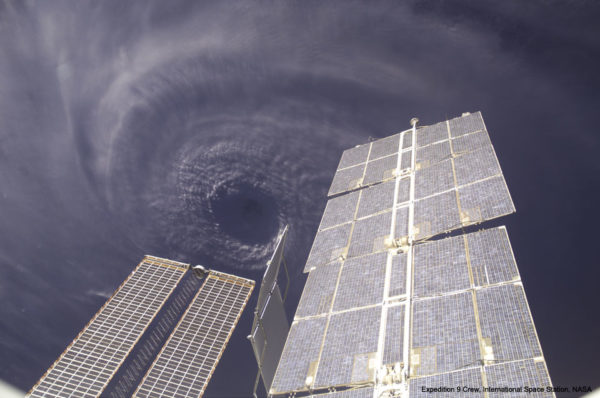 Hurricane Ivan from the ISS in 2004. Image credit: Expedition 9 Crew, International Space Station, NASA.
Hurricane Ivan from the ISS in 2004. Image credit: Expedition 9 Crew, International Space Station, NASA.
From PJ on... well, just off-topic: "Not quite on topic, but worth a look:- http://apod.nasa.gov/apod/astropix.html for Sept. 3 ?"
From above, you can really see the eye-wall of a hurricane. Just a couple of days later, we ran a piece on the physics of hurricanes, and one thing I didn't include (h/t to Joe Hanson) was how the Carnot cycle applies to hurricanes. For those who don't know, the Carnot cycle is the cycle for an ideal "heat engine," where a hot and cold reservoir undergo a series of isothermal (slow, constant temperature) and adiabatic (fast, constant entropy) expansions and contractions.
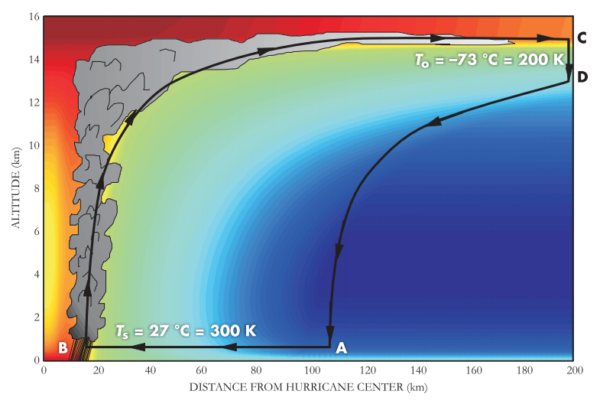 A hurricane as a heat engine, with colors representing constant entropy. Image credit: Kerry Emanuel, Physics World, 2006.
A hurricane as a heat engine, with colors representing constant entropy. Image credit: Kerry Emanuel, Physics World, 2006.
From A-to-B, you have isothermal contraction, as air moves from high pressure to low pressure but gains entropy due to energy inputted from the evaporating seawater. Then from B-to-C, you have adiabatic expansion, as air cools, moving from high temperature to low temperature. Then you have isothermal expansion from C-to-D, as the cool air radiates infrared heat into space, and finally adiabatic compression at near-constant-entropy, as the cool air sinks down to sea level, occurs from D-to-A. You don't normally get "whole hurricane convection" like this, but on average, this is what's going on. Also, the necessity of having convective cells like this explains why the hurricane needs an eye; without it, you couldn't have the column of rising, rotating air that keeps the hurricane going!
 Image credit: WiseGEEK / © 2003 - 2015 Conjecture Corporation, via http://www.wisegeek.com/what-are-crustaceans.htm.
Image credit: WiseGEEK / © 2003 - 2015 Conjecture Corporation, via http://www.wisegeek.com/what-are-crustaceans.htm.
From chris heinz on another solution to our hazardous waste: "I’ve always wondered why we don’t dump garbage including nuclear waste into the Marianas Trench or other subduction zones."
Because of a few combined problems:
- It's difficult to get things down there, safely and reliably, in the first place.
- Things will remain on the ocean floor for millions of years before they're taken further inside the crust and (eventually) mantle.
- And if anything occurs over that time to damage the container that your hazardous waste is in, it's going to pollute the entire ocean.
So from my point of view, it's way riskier and a lot less rewarding than other viable solutions. That doesn't mean, mind you, that the USSR didn't do this back in the 20th century... and if they did, there isn't a whole lot we can do about it now!
From eric and Birgerjohannsen on alternate uses for nuclear waste: "Another off-the-wall idea; use waste for RTGs for robotic spacecraft. Sure, it’s not as efficient as plutonium. But we have a lot of it, we don’t want to keep it, and there’s no proliferation issue in using it."
"By the way, we now have the chemical understanding to separate all actinide isotopes from the lantanides ( americium was a big problem).
It is the actinides that are really long-lived. Burn them in a reactor desgned for mixed-oxide fuel, or why not keep the isotopes near a *fusion* reactor? The fast neutrons will split the heavy nuclei, ridding us of most transurans in one go."
The fact that we have this radioactive material that we appear to be "stuck with" is a real problem for our society over the long term. How do we manage this hazardous material over such long periods of time without damaging our environment? Is there some way to re-use it and get something positive out of it? Can we get rid of them in a way where everything left over is benign?
A good option for many of the heavier elements is in molten-salt thorium reactors, which may be a future fission reactor. We don't have an ongoing fusion reactor, which is too bad, and many of the RTG uses have the dual problem of not being energetic enough for their mass and also not being safe in case of explosion on launch like the plutonium oxide is. There are other ideas worth exploring, since the NIMBY attitude applies not just to power plants, but to potential nuclear waste disposal sites all across the world.
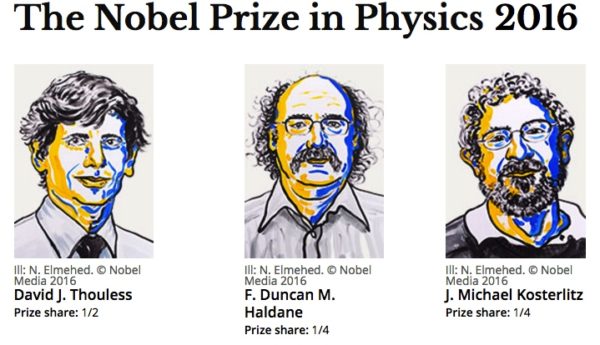 The Nobel Prize in physics for 2016 was awarded to David J. Thouless, F. Duncan M. Haldane and J. Michael Kosterlitz, “for theoretical discoveries of topological phase transitions and topological phases of matter”. Image credit: N. Elmehed. © Nobel Media 2016.
The Nobel Prize in physics for 2016 was awarded to David J. Thouless, F. Duncan M. Haldane and J. Michael Kosterlitz, “for theoretical discoveries of topological phase transitions and topological phases of matter”. Image credit: N. Elmehed. © Nobel Media 2016.
From EpiPete and many others on Nobel Nominations: "Per nobelprize.org – “The completed nomination forms must reach the Nobel Committee no later than 31 January”"
When the LIGO results weren't published until February. This doesn't mean it wasn't likely that LIGO wasn't nominated, mind you. There are hundreds of potential nominators, more than zero of whom likely knew that something was coming this year from LIGO. At 8 months from announcement to prize awarding, it would have been the fastest physics prize ever awarded. But in this case, for a discovery this big, it wouldn't have been a surprise.
From Anonymous Coward on Nobel Prize awards: "The Nobel committee can sometimes take decades to recognise someone. They didn’t give a prize to Frederick Reines until 1995, for his work in discovering the neutrino in 1956! His colleague Clyde Cowan didn’t make it, as he died in 1974, and Reines himself nearly didn’t as well, as he passed away three years after getting the Prize. It seems that the three winners aren’t being awarded for recent work either, judging from Ethan’s article."
"Recency" is the exception rather than the rule when it comes to Nobels, and it's pretty much always been this way. Einstein's Nobel, for the photoelectric effect, came almost 20 years after its discovery. Michelson's Nobel, for the null result of the Michelson-Morley experiment, was again 20 years. Peter Higgs' award came a whopping 50 years after his theoretical work, because it took that long from prediction until discovery. This year's award was given for work done in the 1970s and 1980s, so it's right in line with how the Nobels normally work.
Whether that's good or not is a question for the Nobel committee, though; it doesn't much matter what we think.
While solids, liquids and gases may be the most common states of matter, at extremely low temperatures, condensates can emerge, with unique physical properties. Image credit: © Johan Jarnestad/The Royal Swedish Academy of Sciences.
From Denier on phases of matter: "I had thought there was a different state of matter theorized deep within gas giants. It wasn’t really gas but it wasn’t liquid either, so a probe descending into Jupiter wouldn’t ever hit the surface of an ocean like on rocky planets. Instead the probe would just descend through the gas envelope into a fluid-like region without there ever being a phase [boundary] between the gas and fluid-like stuff."
Well, there are two things to talk about when you mention this. One is that there are extreme states of matter that happen deep within gas giants, like metallic hydrogen, which is a state unlike any other in nature. What I think you're talking about, though, is when you go to high enough temperatures and pressures combined that the distinction between gas and liquid doesn't much matter. Michael talked a bit about this, but the gist is that the interaction strengths and frequencies aren't distinguishable from the normal classification systems we use. It's both and neither liquid and gas, simultaneously. You can think of it as an additional phase if you like, but most physicists don't.
Thouless, Haldane and Kosterlitz. Images credit: IOP, via http://nanotechweb.org/cws/article/tech/66505.
From Narad on the Nobel Prizewinners: "And I’ve just now realized why the lead illustration has been puzzling me on and off: Haldane is David Crosby and Kosterlitz is Jerry Garcia? I’m afraid to plumb my memory for Thouless."
Well, everyone sees something different, I suppose, but maybe I'm not the only one who saw a picture of the young Thouless and thought...
I mean, The Doctor isn't such a stretch for Thouless, is it?
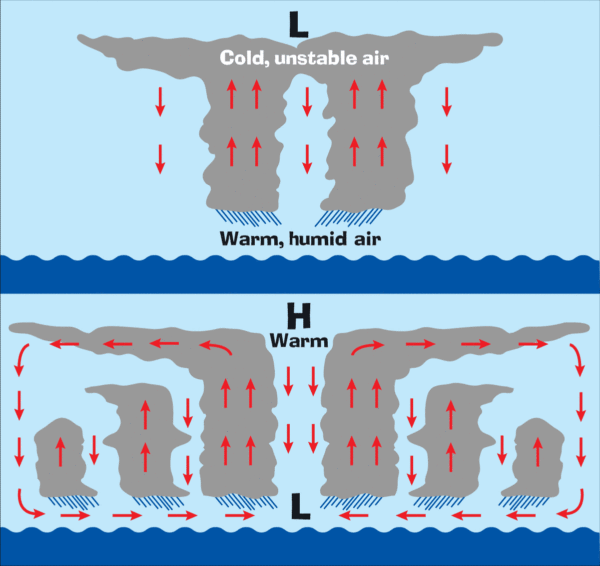 The formation of a hurricane relies on warm, humid air, winds, and pressure changes. Image credit: NASA's SciJinks, via http://scijinks.jpl.nasa.gov/hurricane/.
The formation of a hurricane relies on warm, humid air, winds, and pressure changes. Image credit: NASA's SciJinks, via http://scijinks.jpl.nasa.gov/hurricane/.
From Anonymous Coward (what is this, slashdot?) on Hurricanes: "I wonder what tropical cyclones were like in, say, the Devonian period (around 400 million years ago), where mean surface temperatures were in the range of 30°C (compared to 14°C today), and atmospheric CO2 levels were eight times preindustrial levels, and most of the major continental landmasses were clustered together and surrounded by a world ocean."
Winds were the same, physics were the same, and ocean coverage of the planet was (approximately) the same. The biggest difference was temperature; the atmospheric content doesn't make a difference, and neither ought continental clustering. My guess (and how can we do anything other than guess right now?) is that tropical cyclone frequency was greater back then, but that magnitude and destructive power were comparable to what we see today. In addition, the percent of hurricanes making landfall was probably similar as well.
But who knows what the prevailing winds were like back then?!
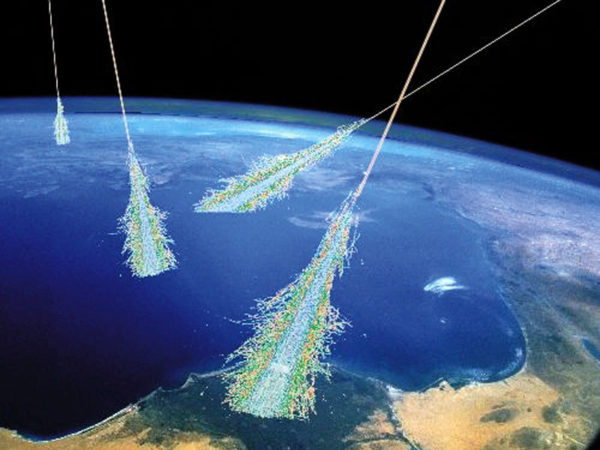 Cosmic rays shower particles by striking protons and atoms in the atmosphere, but they also emit light due to Cherenkov radiation. Image credit: Simon Swordy (U. Chicago), NASA.
Cosmic rays shower particles by striking protons and atoms in the atmosphere, but they also emit light due to Cherenkov radiation. Image credit: Simon Swordy (U. Chicago), NASA.
And finally, from MandoZink on Cherenkov radiation: "I am being treated to the phenomenon of Cherenkov radiation nearly every day this month (last one just a few hours ago). I am on track to receive radiation treatment (@ 6MV?) for a nasal tumor that has returned since my initial radiation in February.
At the very beginning of the radiation dose I am treated to flashes of light as some of the high-energy photons pass through my eye. As another side effect, the radiation also ionizes some O2 into O3, creating small whiffs of ozone that accompany the flashes.
I would like to add that I personally would have preferred not to every experience this, but it is interesting nonetheless."
While the tomotherapy you are experiencing is photons, not particles, this high-energy radiation can still cause the ionization of particles in your eye, and at the energies you cite, the electrons will move faster than the speed of light in your eyeball. In other words, it is possible (from a physics perspective) that if the rest of the information in the thread is correct, your radiologist isn't telling you the whole story.
I am sad to hear about the return of your tumor, as although death is coming for us all, I don't wish it to come for any of us, particularly in a painful manner.
I will say, though, on a related note, that back in the old days of particle physics, when energies and luminosities were much lower, the way you'd tell if the beam was "on" was by closing your eyelid and sticking your eye in the beamline. (Note: do not do this ever!) With your eye closed, you should see blackness under normal circumstances. But with the beam on, the high-energy particles entering your eye will see that nice, aqueous fluid that fills your eyeball. And since they’re passing through at — you guessed it — greater than the speed-of-light in your vitreous eye-fluid, they’re going to emit Cherenkov radiation, and so you'll see "flashes of light" from those high-energy particles with your eye closed, and that's how you know the beam is on.
Enough physicists died of cancer that we no longer allow this, and force accelerator scientists to go through safety and radiation training. (I did in 1997; hi Fermilab!) It's an interesting phenomenon I hope to never experience.
Thanks for a great week everyone, and see you back here next week for more!

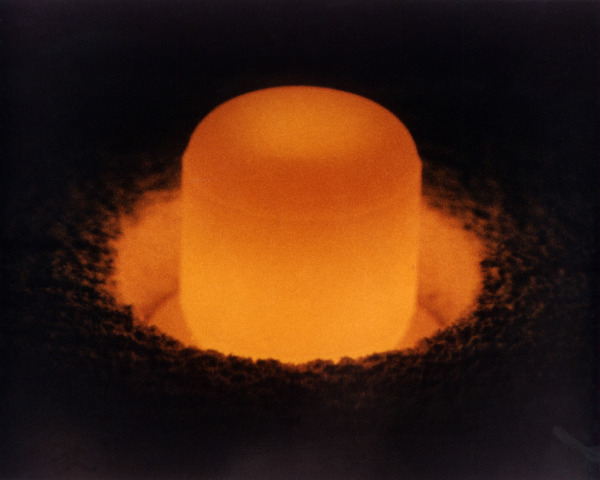
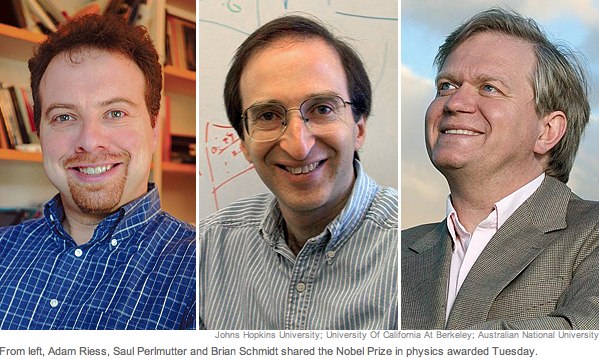

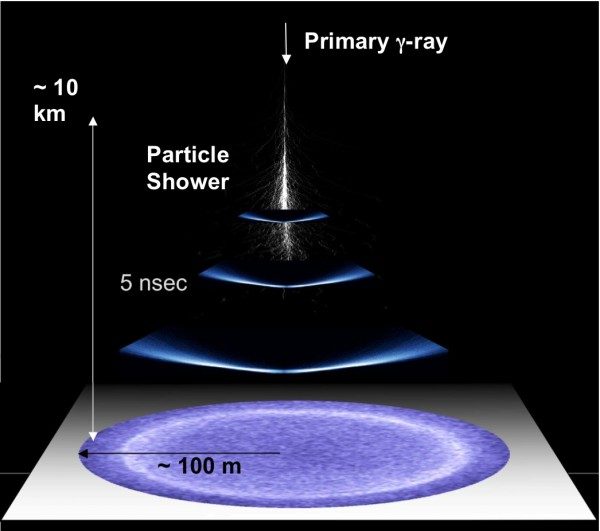
Ah, here's the Thouless photo that they cartoonified. I don't know why they darkened his hair.
Well, it's a slashdot refugee here in any case. :P
As for my previous comments about cyclones in the Devonian period, you did mention in your article: "So long as they remain over warm water, tropical depressions, storms or cyclones can gain in strength, making landfall all that much more dangerous." The world ocean Panthalassa as it existed back in the Devonian seems like it was almost as big as the Atlantic and Pacific oceans put together, and I'd think a storm moving across such a huge expanse of warm water completely uninterrupted by land masses would gain strength like no storm possible today, until it hit the coast of Gondwana or Euramerica. But then again as you mention, it's hard to say what the prevailing winds were like four hundred million years ago.
Richard Wright of The Pink Floyd makes for a good Thouless.
So, can cosmic rays cause hurricanes?
Nice picture Narad!
(Psst..You forgot to remove the semen in the upper-right corner)
*plonk*
There is no shame in being a homosexual Narad.
Now that just got a whole lot off-topic !